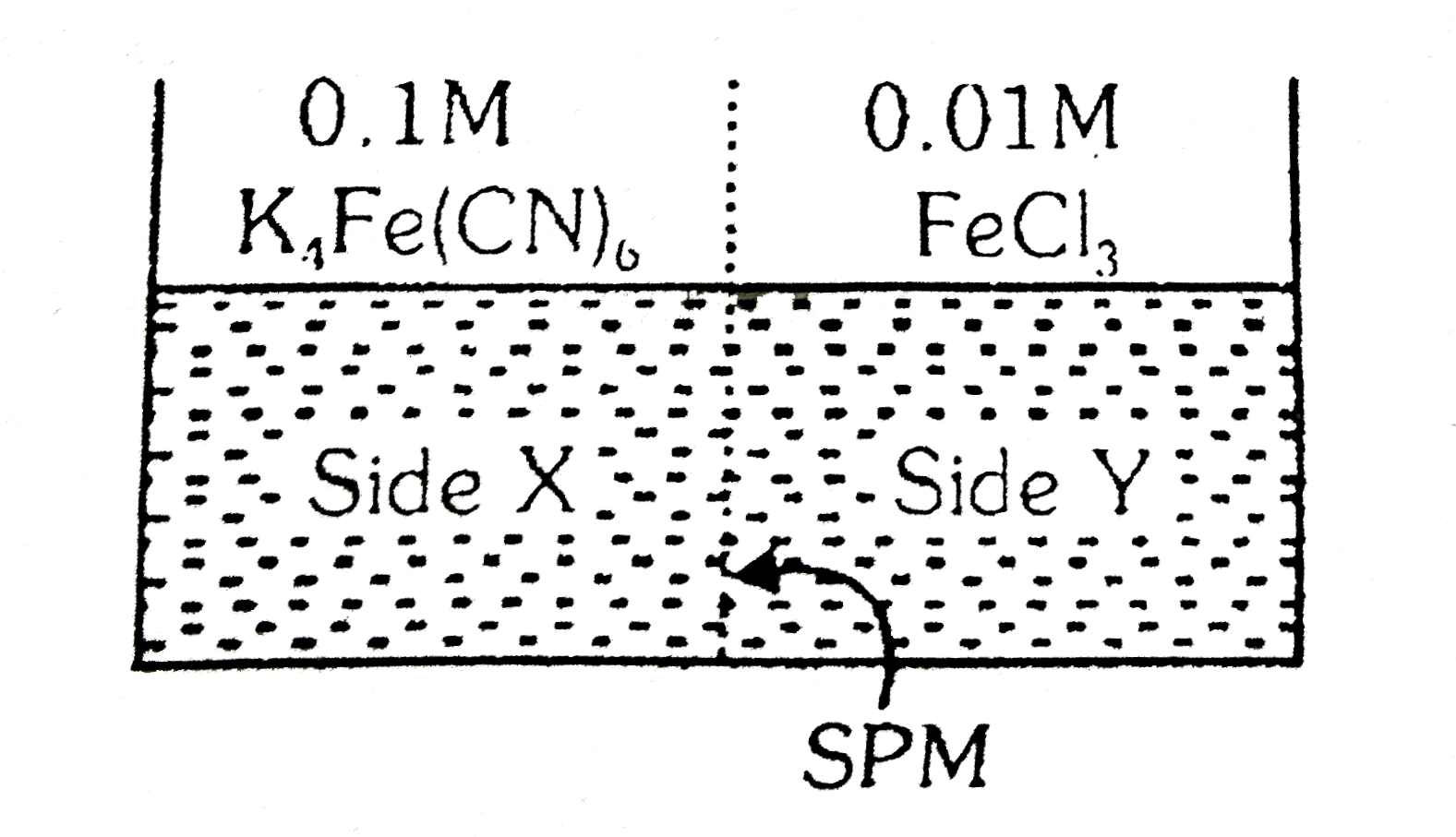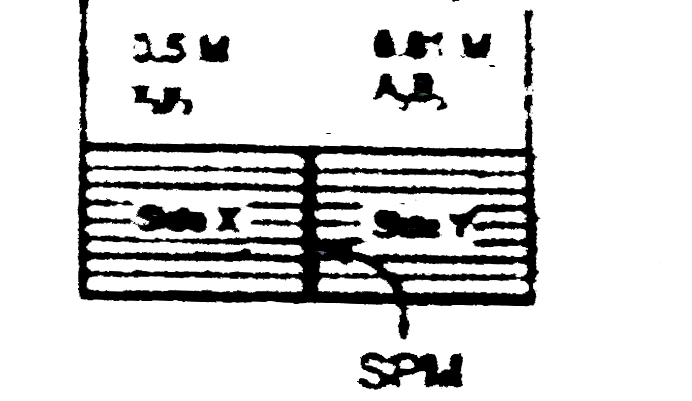FeCl3 on reaction with K4[Fe(CN)6] in aqueous solution gives blue colour. These are separated by a semi-permeable membrane AB as shown. Due to osmosis, there is
![FeCl(3) on reaction with K(4)[Fe(CN)(6)] in aqueous solution gives blue colour. These are separated by a semi-permeable membrane AB as shown. Due to osmosis, there is](https://d10lpgp6xz60nq.cloudfront.net/physics_images/KSV_PHY_CHM_P2_C02_E01_176_Q01.png)
Blue colour formation in side X.
Blue colour formation in side Y.
Blue colour formation in both of side X and Y.
No blue colour formation.
The correct Answer is:D
Osmosis of water and not of ion takes place.
Topper's Solved these Questions
- SOLUTIONSBOOK - CENGAGE CHEMISTRY ENGLISHCHAPTER - SOLUTIONSEXERCISE - Exercise (Assertion-Reasoning)
18 Videos
- SOLUTIONSBOOK - CENGAGE CHEMISTRY ENGLISHCHAPTER - SOLUTIONSEXERCISE - Exercise (Interger)
8 Videos
- SOLUTIONSBOOK - CENGAGE CHEMISTRY ENGLISHCHAPTER - SOLUTIONSEXERCISE - Exercises (Multiple Correct)
25 Videos
- SOLID STATEBOOK - CENGAGE CHEMISTRY ENGLISHCHAPTER - SOLID STATEEXERCISE - Ex 1.2 (Objective)
9 Videos
- SURFACE CHEMISTRYBOOK - CENGAGE CHEMISTRY ENGLISHCHAPTER - SURFACE CHEMISTRYEXERCISE - Archives Subjective
2 Videos
Similar Questions
FeCl3 on reaction with K4[Fe(CN)6] in aqueous solution gives blue colour.

These are separated by a semipermeable membrane AB as shown. Due to osmosis there is:
View SolutionFeCI3 on reaction with K4[Fe(CN)6] in aqueous solution gives blue colour.

These are separated by a semipermeable membrane AB as shown. Due to osmosis there is:
View SolutionFeCI3 on reaction with K4[Fe(CN)6] in aqueous solution gives blue colour.

These are separated by a semipermeable membrane AB as shown. Due to osmosis there is:
View SolutionX3Y2(i=5) when reacted with A2B3(i=5 in aqueous solution gives brown colour. These are separated by a semipermeable membrane AB as shown. Due to oxmosis there is :

a.brown colour formation in side X
b.brown colour formation in side Y
c.formation in both of the sides X and Y
d.no brown colour formation
View SolutionAddition of K4[Fe(CN)6] solution to FeCl3 solution gives
View SolutionK4[Fe(CN)6] reacts with ozone is give:
View SolutionFe2+ does not give blue colour with K4[Fe(CN)6] but on its reaction with (X) ,blue colour oppears (X) can be
View SolutionWhen K4[Fe(CN)6] is added to FeCl3,the complex compound formed is:
View SolutionWhen K4[Fe(CN)6] is treated with FeCI3 a blue colour is obtained It is due to the formation of .
View SolutionA light bluish-green crystalline compound responds to the following tests:
(i). Its aqueous solution gives a brown precipitate on reaction with alkaline K2[HgI4] solution.
(ii). Its aqueous solution gives a blue colour with K3[Fe(CN)6] solution.
(iii). Its solution in hydrochloric acid gives a white precipitate with BaCl2 solution. Identify the ions present and suggest the formula of the compound.
View Solution
